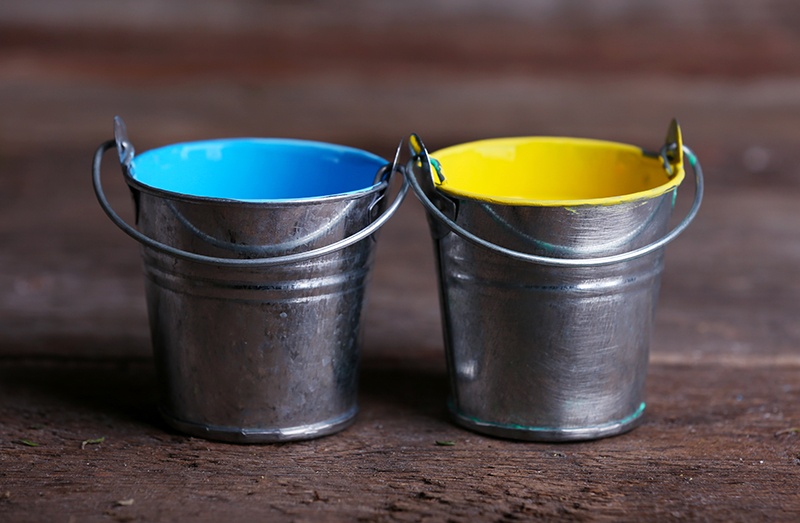Comparison Between Pre Aia and Post Aia Prior Art
Most patent attorneys are now very familiar with the changes in Us patent constabulary that were created past the America Invents Act (AIA), which was passed in 2011 and took effect in 2012 and 2013. In fact, those of us who good under pre-AIA constabulary might even take kicked the habit of referring to "old 102(e)" and other sections of the statute that were axed past the AIA.
Though y'all're probably quite comfortable with post-AIA police force and how it operates, there are notwithstanding some important and possibly less familiar nuances that can bear on the strength of your patent portfolio over the long term. In item, information technology's important to understand how a visitor'due south own previously filed patent applications tin get prior art against later-filed patent applications under the AIA.
This is particularly critical for companies who are developing larger portfolios with several patent applications around a core technology area.
To assistance y'all navigate the law in this area, let's take a closer await at how the AIA defines prior art, and and so discuss what y'all can exercise if a company's own previously filed awarding is cited in a rejection against the company's later-filed applications. (We'll be deep diving into some pretty nerdy stuff about one particular statute — consider yourself warned!)
HOW DOES THE AIA DEFINE PRIOR ART?
The AIA amended federal statute 35 UsC. 102 — which defines what is considered prior art under U.S. law — to effectively create 2 "buckets" of prior art. These are defined in Sections 102(a)(one) and 102(a)(2) of the statute.
Under both Sections, when y'all file a new patent application, your visitor'due south previously filed applications tin can potentially be applied as prior art confronting the new application. Specifically, if the 2 applications have similar discipline matter, the previously filed awarding could exist used to reject the new application as either existence "anticipated past" or "obvious in view of" the previously filed application.
But the AIA also provides exceptions in Department 102(b) for each "bucket" of prior art. In other words, certain types of information may meet the general definitions in Sections 102(a)(1) or 102(a)(2), but are however not considered prior art considering they see one of the specific exceptions listed in Sections 102(b)(ane) and 102(b)(ii) respectively.

WHEN DO OUR COMPANY'S PREVIOUSLY FILED APPLICATIONS COUNT Every bit PRIOR ART?
To determine which of the "buckets" your previously filed application might autumn into — and whether information technology qualifies for an exception — use the post-obit table:
| Prior art definition | Section 102(a)(one) | Section 102(a)(2) |
| When did the previously filed application become public? | The prior application became public (via publication or grant)earlier the new awarding is filed. | The prior application will become public (via publication or grant)at some bespeak — whether before or later on the new application is filed. |
| Who are the listed inventors? | The definition applies regardless of inventorship. | The awarding must name at least one inventor who'due south not an inventor on the new application. |
| Which statute provides exceptions to this definition of prior art? | Section 102(b)(ane) only | Section 102(b)(2) only |
| How are the exceptions* adamant? | 1. Earliest date of publication two. Listed inventors | Buying of the application |
* We're just because the exceptions that are most relevant for the scenario considered here. Exist aware that there are other exceptions that could apply in some express circumstances.
In curt, when you're developing a strategy for a new application, yous may need to take reward of the exceptions in Department 102(b) if both of the following are true:
- One of your previously-filed patent applications qualifies as prior art in either "bucket,"
AND - The subject field affair is close enough that information technology could weaken your arguments for patentability.
And so let's look at when the exceptions apply, how to bargain with them strategically when filing an application, and how to invoke them when responding to an part activeness.
Department 102(A)(1): DOES OUR PREVIOUSLY FILED PATENT APPLICATION COUNT AS PRIOR ART?
The only exceptions to Department 102(a)(1) are provided by Section 102(b)(i). For sophisticated companies who are developing large patent portfolios, the exception that is well-nigh probable to be useful is the first one, provided in subsection (b)(ane)(A) of the statute.
Primeval Date OF PUBLICATION
When did the content of the prior awarding first become public (via publication, patent grant or otherwise)?
If the prior application's primeval date of publication was more than one yr earlier the effective filing engagement of your new application, so you lot can finish at that place. Any awarding that was published or patented more than i year earlier you file your new application is prior art — no exceptions utilise.
If the prior awarding's earliest date of publication was less than one year before the filing appointment of your new application, and then y'all might be able to remove the prior application as prior art under the exception provided in Section 102(b)(i)(A).
LISTED INVENTORS
Section 102(b)(1)(A) provides an exception for a "grace menstruation inventor disclosure," which is a disclosure made past an inventor inside one year earlier the new application was filed.
In other words, if the material affecting patentability from the prior application was contributed by an inventor on the new application, then that fabric is not prior art.
There are 3 possible scenarios:
- All inventors from the prior application are as well inventors on the new application.Becauseeverythingin the prior awarding was disclosed by an inventor on the new application, you run across this exception — your prior application does not count as prior art.
- No inventors from the prior application are too inventors on the new application.Becausenull in the prior awarding was disclosed past an inventor on the new application, you do non run into the exception — your prior application qualifies as prior art.
- Some of the inventors from the prior application are also inventors on the new application. In this case, you have to effigy out (if possible) which inventors from the prior awarding contributed the information that affects the patentability of the new application.
- The prior application does not count as prior art if and only if the relevant disclosure in the prior awarding was made by an inventor on the new awarding.
- If you tin can't determine who contributed the relevant subject matter, and so the prior application will count as prior art.
HOW TO Have Advantage OF THE EXCEPTIONS IN SECTION 102(B)(1)
If you haven't filed the new awarding withal, and the inventors on the prior application are still with the company, consider adding some of their contributions to the new application so that they tin can exist properly listed every bit inventors on the new awarding.
OVERCOMING USPTO REJECTIONS BASED ON Department 102(A)(1)
When examining the new application, the USPTO will probably consequence a rejection based on the previously-filed patent awarding. To overcome the rejection, you lot will need to submit a declaration or affidavit (under37 CFR 1.130) stating that the disclosure in the prior application was fabricated by an inventor on the new application.
SECTION 102(A)(2): DOES OUR PREVIOUSLY FILED PATENT Application COUNT AS PRIOR ART?
The only exceptions to Department 102(a)(2) are provided by Section 102(b)(ii). For sophisticated companies who are developing large patent portfolios, the exceptions that are most probable to be useful are the first and third ones, provided in subsections (b)(2)(A) and (b)(2)(C) of the statute.
OWNERSHIP OF THE APPLICATION
The prior application meets the exception in Department 102(b)(2)(C) if, as of the filing engagement of the new awarding,boththe prior application and the new application are owned by (or subject to an obligation of assignment to) your company.
In most tech companies, all inventions would be owned by the visitor and all patent applications would be subject to an obligation of consignment to the company. Therefore, unpublished prior applications typically wouldn't count as prior art due to the exception in Section 102(b)(2)(C).
HOW TO TAKE ADVANTAGE OF THE EXCEPTIONS IN SECTION 102(B)(ii)
Make sure to document ownership of all your patent applications in a timely fashion. Otherwise, y'all may terminate up creating unnecessary prior art against your own patent portfolio. For one, your inventors should execute assignments when filing patent applications.
For another, your inventors should complete and sign invention disclosure records (IDRs). IDRs help document the inventor's obligation to assign the invention to the company. This can be useful if, for example, the inventor leaves the company earlier they tin can file a patent awarding or execute assignments.
Fifty-fifty if you lot tin can't properly document common ownership (or in the event that the two applications are non ordinarily owned), yous can also utilize the exception in Department (b)(ii)(A) based on inventorship — similar to the exceptions discussed above for the first "bucket" of prior art laid out in Section 102(b)(1).
OVERCOMING USPTO REJECTIONS BASED ON SECTION 102(A)(two)
When examining the new application, the USPTO will probably outcome a rejection based on the previously-filed patent application. To overcome the rejection, you lot need to submit a statement of common buying.
Specifically, in responding to the rejection, you'll need to provide a statement that "the disclosure of the subject thing on which the rejection is based and the claimed invention were owned by the same person or subject to an obligation of assignment to the same person not later than the effective filing date of the claimed invention."
The statement of mutual ownership doesn't have to be provided equally a formal annunciation or affidavit; for example, you tin can put information technology in the remarks department of your office action response.
HOW CAN WE DEAL WITH OTHER TYPES OF PRIOR ART?
Keep in heed that this post only deals with previously filed patent applications. If the content of your patent application was too published elsewhere, you will need to analyze that publication separately. In other words, you should be aware of all the ways that the aforementioned data may have entered one of the "buckets" of prior art, other than by virtue of being a previously filed application.
In our free eBook, "Prior Art and the Patent Process," we take a deep dive into the other types of prior fine art that could touch your patents and applications — and what you can do near it. Download information technology now!
MINIMIZE THE RISK THAT Yous'LL Encounter UNEXPECTED PRIOR ART. Hither'S WHAT SMART TECH COMPANIES NEED TO KNOW.
Simply what should you do if you lot discover prior art against your invention? Download our Costless eBook to find out. Learn the following:
- How does the industry define prior fine art?
- How can you practise an effective prior art search — and tin you do it yourself?
- How will discovering prior art affect the claims in your patent application?
- What steps can yous take to avoid unexpected prior fine art?
- How can y'all avoid accidentally creating prior fine art against your own patents and applications?
Walk abroad equipped with smart strategies to navigate common prior art obstacles during the patent process.
Fill up out the short form on this page to download this eBook today!

Michael Grand. Henry, Ph.D.
Michael 1000. Henry, Ph.D., is a master and the house's founding fellow member. He specializes in creating comprehensive, growth-oriented IP strategies for early-stage tech companies.
schradertowle1964.blogspot.com
Source: https://henry.law/blog/prior-art-under-aia/
0 Response to "Comparison Between Pre Aia and Post Aia Prior Art"
Post a Comment